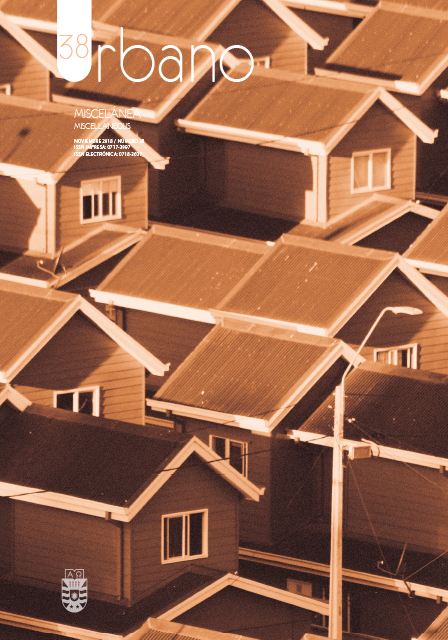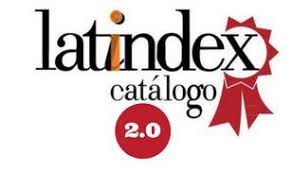Percepción de inseguridad en un entorno rural desde la perspectiva de género. El caso de Flor de coco en Colima, México
DOI:
https://doi.org/10.22320/07183607.2018.21.38.01Palabras clave:
género, espacio urbano, asentamiento rural, inseguridad, percepciónResumen
Este trabajo tiene como objetivo analizar, desde la perspectiva de género, la percepción que un grupo de mujeres de un poblado rururbano, con alta marginalidad, tienen de los espacios públicos y del contexto de sus viviendas. La investigación forma parte del proyecto Vivienda y mujer: espacios habitables para el desarrollo de familias con jefatura femenina en la comunidad de Flor de Coco, Municipio de Armería, Colima.
Para el estudio se empleó una metodología cuali-cuantitativa con información de campo, entrevistas, talleres y el análisis del entorno inmediato de ocho viviendas con jefatura femenina. Los resultados muestran que existen diez tipos de inseguridad, desde la percepción de las mujeres: drogadicción, alcoholismo, robos y asaltos, violencia de género, pandillerismo, inseguridad por falta de iluminación, por falta de vigilancia, por riesgo de deslaves, por problemas de movilidad y por inundaciones y crecidas del río. Como señalan Nieto Morales y Esquivel Hernández, Soto Villagrán, Ortiz Escalante, Col-lectiu Punt 6 y Farapi, la ausencia de una planeación con perspectiva de género de la forma urbana y su espacio público afecta más a las mujeres, lo que las vuelve más vulnerables.
Descargas
Citas
CAPRON, Guénola y SÁNCHEZ, Cristina. La inseguridad en la metrópoli. Territorio, segurización y espacio público. México: Universidad Autónoma Metropolitana-Azcapotzalco, 2015.
CHÁVEZ GONZÁLEZ, Martha Eugenia. Guía de estrategias para la utilización de suelo baldío en áreas urbanas. Colima : Documento inédito para CONAVI- CONACyT, 2016.
COL-LECTIU PUNT 6. Informes. Programa Ciutats i Persones. Barcelona: Institut de Ciències Polítiques i Socials Universitat Autònoma de Barcelona, 2011.
FARAPI S.L. Intervención urbanística con perspectiva de género. Farapi [en línea]. [Consultado 10 noviembre 2006]. Disponible en: http:// www.debegesa.eus/es/estudios-y-publicaciones/ponencias-2006/ ponencias-2006/DIA_3/Bloque1_PerspectivaGeneroPlaneamiento/
Microsoft%20PowerPoint%20-%20genero.pdf.
INSTITUTO NACIONAL DE ESTADÍSTICA Y GEOGRAFÍA (INEGI). Encuesta Intercensal 2015 [en línea], 2016. [Consultado 12 enero 2018.] Disponible en: http://www.beta.inegi.org.mx/proyectos/enchogares/especiales/ intercensal/.
INSTITUTO NACIONAL DE ESTADÍSTICA Y GEOGRAFÍA (INEGI). Sistema para la Consulta de Información Censal. Sistema para la Consulta de Información Censal [en línea], 2010. [Consultado 01 junio 2018]. Disponible en: http://gaia. inegi.org.mx/scince2/viewer.html.
JACOBS, Jane. The death and life of great American cities. New York: The Modern Library, 1993.
MICHAUD, Anne. Pour un environnement urbain sécuritaire. Guide d’aménagement. Ville de Montréal: Femmes et ville de la Ville de Montréal, 2002.
MINISTERIO DE VIVIENDA Y URBANISMO-MINISTERIO DEL INTERIOR- FUNDACIÓN PAZ CIUDADANA. Espacios urbanos seguros. Santiago, Chile: Banco Mundial-Asociación Chilena de Municipalidades-Gobierno de Chile, 2003.
NEWMAN, Oscar. The Defensible Space. New York: Collier, 1978.
NIETO MORALES, Patricia y ESQUIVEL HERNÁNDEZ, María Teresa. Estrategias de segurización de las mujeres en la ciudad. En: En: CAPRON, Guénola y SÁNCHEZ, Cristina. La (in)seguridad en la metropoli. Territorio, segurización y espacio público. México : Universidad Autónoma Metropolitana- Azcapotzalco, 2015, pp. 213-235.
ONU Mujeres. Ciudades seguras y espacios públicos seguros. En: ONU Mujeres [en línea], noviembre de 2015. [Consultado 4 marzo 2018]. Disponible en: http://www2.unwomen.org/-/media/field%20office%20 americas/documentos/publicaciones/2017/ciudades%20seguras%202016. pdf?la=es&vs=2718.
ORDAZ BELTRÁN, Guadalupe y MONROY LIMÓN, Lilia. Repensando las políticas públicas para las familias. Coyuntura Demográfica, 2016, no 10, pp. 25-29
ORTIZ ESCALANTE, Sara. Espacio público, género e (in)seguridad. En: Col·lectiu Punt 6 [en línea], 2014. [Consultado 10 marzo 2018]. Disponible en: https://punt6.files.wordpress.com/2014/07/ espaciopublicogc3a9neroeinseguridad_ortiz.pdf.
RAINERO, Liliana. Desafiando el escenario de la seguridad ciudadana. En: RED MUJER Y HÁBITAT DE AMÉRICA LATINA (eds.). Construyendo ciudades seguras. Experiencias de redes de mujeres en América Latina. Chile: ONU mujeres-AECID, 2011, pp. 15-38.
SEDESOL-CONEVAL. Informe anual sobre la situación de la pobreza y rezago social. Armería. Colima: Sedesol-CONEVAL, 2011.
SOTO VILLAGRÁN, Paula. Ciudad y espacio público. Un análisis de género de la inseguridad en la colonia Doctores. [aut. libro] En: CAPRON, Guénola y SÁNCHEZ, Cristina. La (in)seguridad en la metrópoli. Territorio, segurización y espacio público. México: Universidad Autónoma Metropolitana- Azcapotzalco, 2015, pp. 235-267.
VÁLDES, Ximena. Lo privado y lo público: lugares en desigual disputa. Chile: Colección Ideas, 2007, vol. 8, n° 77, p. 79.
VALDÉS, Ximena y REBOLLEDO, Loreto. Géneros, generaciones y lugares: cambios en el medio rural de Chile Central. Polis. Revista Latinomericana, 2015, vol. 14, n° 2, pp. 491-513.
VALLADARES ANGUIANO, Reyna, CHÁVEZ GONZÁLEZ, Martha Eugenia; PRECIADO JIMÉNEZ, Susana Aurelia; BARRÓN PÉREZ, Antonieta; PRADO MESA, Claudia Marcela, URIBE RAMOS, Juan Manuel y HERRERA GUERRERO, María Guadalupe. Primer Informe del proyecto Vivienda y Mujer, espacios habitables desarrollo de familias con jefatura femenina en la comunidad e Flor de Coco, Armería. Colima : INMUJERES-CONACyT-Universidad de Colima, 2016a.
VALLADARES ANGUIANO, Reyna; CHÁVEZ GONZÁLEZ, Martha Eugenia y PRECIADO JIMÉNEZ, Susana Aurelia. Taller de Diseño Urbano participativo. INMUJERES-CONACyT, Armería: 2016b.
VALLADARES ANGUIANO, Reyna; PRECIADO CORTÉS, Florentina; TAPIA GONZÁLEZ, Georgina Aimé y HERRERA GUERRERO, María Guadalupe.Taller Sensigén 1 en la comunidad de Flor de Coco. INMUJERES-CONACyT, Armería: 2016c.
VALLADARES ANGUIANO, Reyna; TAPIA GONZÁLEZ, Georgina Aimé y HERRERA GUERRERO, María Guadalupe Taller Sensigén 2 en la comunidad de Flor de Coco. INMUJERES-CONACyT, Armería: 2016d.
Publicado
Cómo citar
Número
Sección
Licencia
El contenido de los artículos y reseñas que se publican en cada número de Urbano, es responsabilidad exclusiva de los autores y no representan necesariamente el pensamiento ni comprometen la opinión de la Universidad del Bío-Bío.
Las/os autoras/es conservarán sus derechos de autor, sin embargo, garantizarán a la revista el derecho de primera publicación y difusión de su obra. La publicación del artículo en Urbano estará sujeta a la Licencia de Reconocimiento de Creative Commons CC BY-SA que permite a otros compartir-copiar, transformar o crear nuevo material a partir de esta obra para cualquier propósito, incluso comercialmente, siempre y cuando se reconozcan la autoría y la primera publicación en esta revista, y sus nuevas creaciones estén bajo una licencia con los mismos términos.![]()























